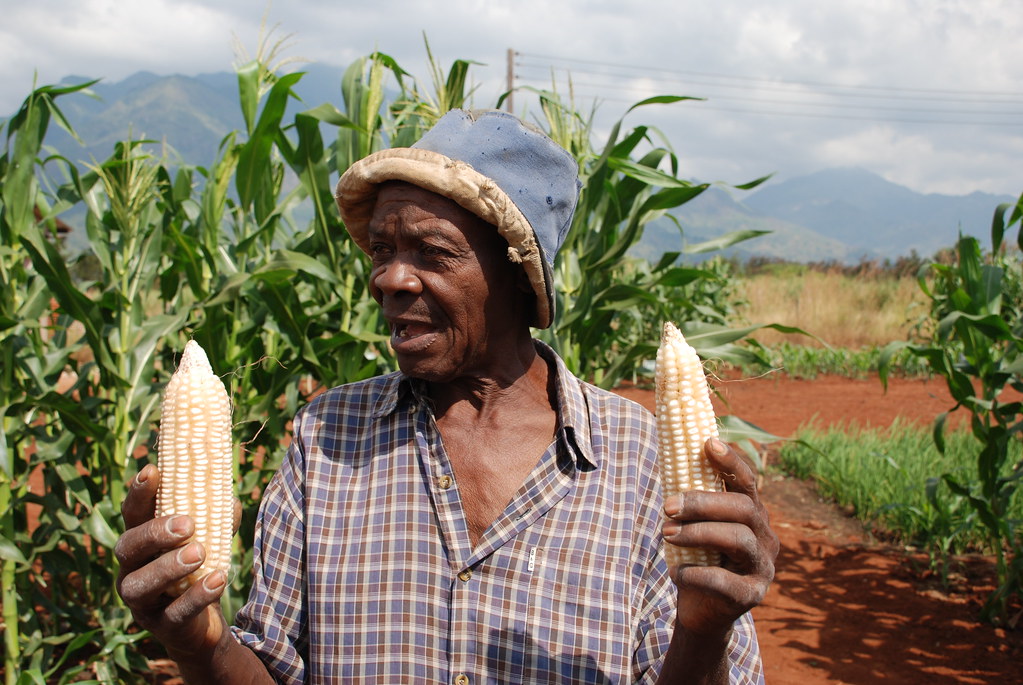According to Bill & Melinda Gates Foundation Global Growth & Opportunity President Rodger Voorhies, the alarming realities of climate change are now evident almost everywhere.
July 2023 was the hottest month ever recorded. Countries all over the world are experiencing deadly heat waves. The climate threat is particularly perilous for sub-Saharan Africa and South Asia, where populations and temperatures are both rising faster than anywhere else in the world.
From the drought in East Africa that has displaced millions to the devastating floods last year in Pakistan, farming communities in Africa and South Asia are already among those suffering most from climate change, even though they are least responsible for it in terms of greenhouse gas emissions. Home to more than 3 billion people, these regions also have the world’s largest concentrations of poverty and malnutrition. Most people in these areas depend on an incredibly climate-sensitive occupation to support their families or get their food: raising crops and livestock on a small parcel of land.
By the end of this decade, climate shocks alone could drive 132 million more people into extreme poverty; by 2050, the risk of hunger and malnutrition could rise by 20 per cent.
New scientific innovations are however making farms and crops more resilient to changes in climate and boosting nutrition. Many of these innovations are already available; others are in the early stages of development but, given sufficient investment, can move quickly through the pipeline.
They include:
- Naturally climate-smart and nutritious crops.
Farmers in Africa and South Asia have been growing naturally resilient crops like millet, sorghum, sweet potato, cassava, and pigeon peas for centuries.
However, these crops have gotten little attention from major crop breeding programs, which means current harvests are far below their potential. The Bill & Melinda Gates Foundation is supporting work by CGIAR, the world’s largest global agricultural innovation network, and others to develop improved varieties of all these crops.
For example, major investments in an African-led initiative have provided many new disease-resistant varieties of cassava, and new varieties of orange-fleshed sweet potatoes are benefiting millions of people in 17 African countries in three important ways: They are naturally rich in vitamin A., they grow well in hot and dry conditions, and they are generating new income opportunities for local farmers and food processors.
- More resilient, lower-emission small-scale livestock production.
Across much of sub-Saharan Africa and South Asia, livestock are often a family’s most valuable asset and a vital source of essential nutrients.
Livestock experts are working with small-scale dairy and poultry farmers to identify hardy, resilient indigenous breeds and resilient feeds to help them sustainably increase production as temperatures rise. Similarly, small-scale aquaculture presents opportunities to address malnutrition and expand economic opportunity. CGIAR’s WorldFish Center is training fish farmers in Bangladesh in the cultivation of an improved type of rohu, an indigenous species of carp that grows faster, weighs more, and is packed with more micronutrients.
- Adaptation Atlas.
CGIAR has developed the Adaptation Atlas, an online, interactive data platform that partners can use to evaluate climate risks in different parts of Africa and then estimate the potential impacts of various adaptation innovations. The atlas shows that by the end of the decade, 200 million people in Africa will be living in areas that have exceeded 2 degrees C in warming over pre-industrial levels—the point at which we can expect significant harm to crops and livestock. Unless we act now to help farmers adapt, by 2050 that number could soar to 1 billion. An Adaptation Atlas for South Asia is also in development.
- Large-scale food fortification.
Fortifying foods with essential micronutrients like zinc, iron, iodine, folic acid, and vitamins A and D is a proven and highly scalable intervention that has already helped reduce the incidence of once-rampant preventable diseases like pellagra and beriberi. Every Sh152 ($1) spent on large-scale food fortification generates Sh4,104 ($27) in economic return from prevented disease, improved earnings, and enhanced work productivity, making it one of the most cost-effective measures available.
There are still many places where fortification isn’t happening for a variety of reasons, and thus opportunities to augment nutrition are being missed.
Courtesy: Bill & Melinda Gates Foundation
